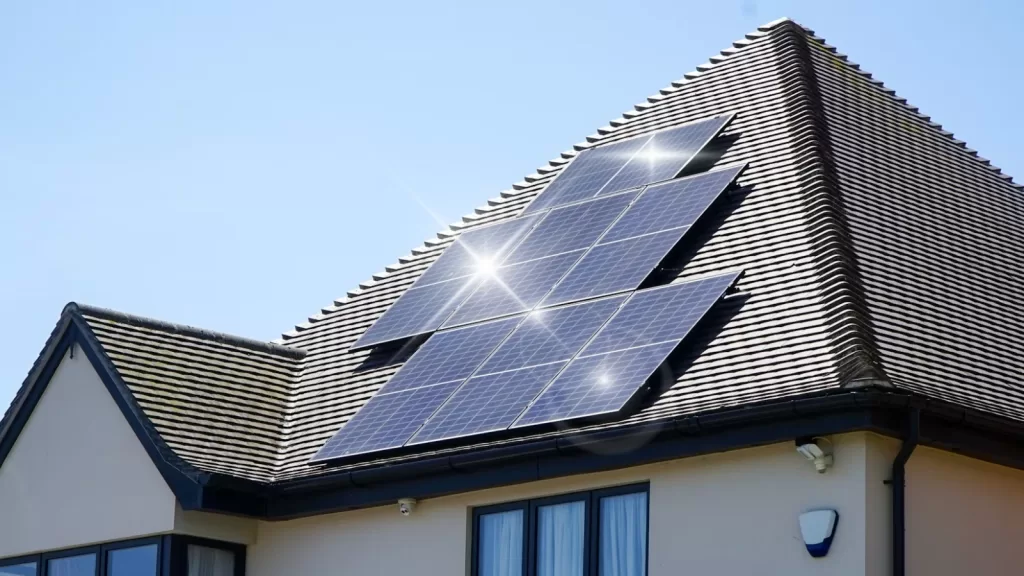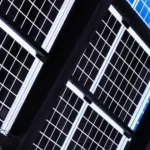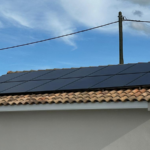Table of Contents
1. Introduction
2. Why Do Solar Panels Produce Glare?
3. How Do IBC Solar Panels Reduce Glare?
4. In Which Scenarios Should Glare Considerations Be Particularly Taken Into Account?
5. Conclusion
Introduction
In the pursuit of a more environmentally friendly Earth, solar energy has gradually become a bright beacon, receiving increased attention in recent years as a clean alternative to fossil fuels. Photovoltaic (PV) modules are at the core of this technology, converting sunlight into electrical energy through the photovoltaic effect. As a cornerstone of renewable energy, PV modules represent a significant direction for sustainable development and reducing carbon footprints. However, a common issue with PV modules is reflection and glare. So, why does glare occur with photovoltaic modules? How do IBC photovoltaic modules address this problem?
Why Do Solar Panels Produce Glare?
During the process of converting sunlight into electrical energy, not all light is absorbed by photovoltaic modules. Some light is reflected, and this reflection can lead to glare under certain circumstances. Here are some key factors affecting glare in solar panels:
1. Reflective Surfaces of Photovoltaic Modules
l Smooth Glass Surface: PV modules typically use smooth glass surfaces to protect the solar cells. Although this design enhances the durability of the panels, it can also reflect more light under bright conditions, resulting in a higher reflectance.
l Photovoltaic Strips: In traditional photovoltaic panels, the surface is covered with a metal electrode grid (photovoltaic strips). These grids not only help collect current but also reflect some light. Due to the metallic nature of the photovoltaic strips, they can increase light reflection, further heightening the potential for glare.
2. Surface Characteristics of Photovoltaic Materials
The materials used in photovoltaic modules also influence light reflection. Solar cells with smoother surfaces or lacking effective anti-reflective treatments are more prone to producing glare.
3. Installation Angle and Solar Elevation Angle
When the solar angle is low, light is more likely to reflect off the reflective surfaces of the solar panels, increasing glare intensity. This is especially true in the early morning or late evening when the sun is at a lower angle, resulting in stronger reflected light. Additionally, the lower the solar angle, the more direct sunlight the panels receive, which exacerbates the glare issue.
4. Impact of Surrounding Environment
The surrounding environment of photovoltaic modules can also influence glare production. Reflective surfaces such as water bodies, snow-covered areas, or glass buildings can interact with the glare produced by solar panels, potentially amplifying the glare effect.

How Do IBC Solar Panels Reduce Glare?
1. What Are IBC Photovoltaic Modules?
IBC (Interdigitated Back Contact) technology moves all the electrode grid lines from the front of the solar cell to the back. Both the PN junction and the metal contact points are arranged on the back of the cell in an interdigitated manner, which reduces the shading of sunlight caused by front grid lines. The light-capturing structure, composed of pyramid-like textured structures and anti-reflective layers, maximizes the utilization of incident light. IBC solar cells primarily enhance conversion efficiency through structural changes, making them a relatively pure type of monofacial solar cell. This not only provides users with more effective generating area but also helps improve power generation efficiency and enhances the aesthetic appeal.

2. Glare Reduction Technology in IBC Photovoltaic Modules
The glare reduction technology in IBC (Interdigitated Back Contact) photovoltaic modules encompasses multiple high-precision designs and material optimizations aimed at significantly reducing light reflection and glare phenomena, thus enhancing the efficiency and performance of the modules.
a. Back Contact Design
IBC modules use a back contact design, with electrodes arranged on the back of the photovoltaic cells rather than the front. This design offers several significant advantages:
l Reduced Front Surface Shading: The front surface is free of electrode strips or other metal structures, allowing light to pass through the silicon wafer with minimal obstruction, thus reducing reflection and scattering on the front surface.
l Improved Light Absorption Efficiency: All light can directly illuminate the photovoltaic cells, increasing the absorption rate and improving power conversion efficiency while reducing glare caused by light reflection.
l Elimination of Grid Line Shading: The absence of grid lines on the front avoids light occlusion current losses caused by metal electrodes, maximizing the utilization of incident photons, with short-circuit currents approximately 7% higher than traditional solar cells.
b. Low Reflection Design
Photovoltaic panels do not absorb all incoming light, and different types of solar panels exhibit varying performance in light absorption and reflection:
l Monocrystalline Solar Panels: Reflection rates range from 0.2% to 0.35%
l Polycrystalline Solar Panels: Reflection rates range from 0.25% to 0.40%
l Thin-Film Solar Panels: Reflection rates range from 0.50% to 15.0%
As a type of monocrystalline solar panel, IBC solar panels perform exceptionally well in terms of reflection. Maysun Solar’s IBC (back contact) monocrystalline silicon solar panels utilize a no-welding process, reducing the reflection rate to just 1.7%. This low reflection rate significantly mitigates light pollution to the surrounding environment and enhances overall photovoltaic performance.
c. Anti-Reflective Coating
The surface of IBC modules is coated with an anti-reflective coating, a thin film with the following functions:
l Reduction of Reflected Light: The anti-reflective coating significantly reduces the reflection of light on the module surface by precisely controlling light transmission and reflection, minimizing the refractive index difference between the glass and air, thereby reducing glare generation. Common materials include silicon nitride (SiNx) and titanium dioxide (TiO2).
l Enhanced Performance in Low Light Conditions: This coating also improves the power generation efficiency of photovoltaic modules in low-light environments, enabling better performance in cloudy or dim conditions.
d. Black Frame Design
IBC modules are typically equipped with black frames, offering the following advantages:
l Reduction of Reflection and Glare: Black frames can absorb incoming light, reducing reflection and further decreasing glare phenomena.
l Improved Visual Uniformity: The black frame provides a modern appearance that integrates better with various architectural styles while minimizing the impact of light reflection on the building’s aesthetics.
e. Surface Treatment Technology
l Textured Surface: By applying micron-level textures or grooves to the surface of the silicon wafer, the incidence and reflection paths of light are altered, thus reducing the amount of reflected light.
l Self-Cleaning Coating: Some IBC modules utilize coatings with self-cleaning capabilities, reducing the accumulation of dust and dirt, maintaining good light transmittance, and further lowering reflection and glare.

In Which Scenarios Should Glare Considerations Be Particularly Taken Into Account?
1. Building-Integrated Photovoltaics (BIPV)
In urban environments, particularly in high-rise buildings and dense city areas, the light reflection from solar panels can significantly disrupt the visual experience for residents of surrounding buildings. Reflected sunlight may not only affect the living conditions inside buildings but can also create unforeseen light pollution issues at night or in low-light conditions.
2. Residential and Commercial Areas
When installing solar panels near residential and commercial zones, glare can impact the daily lives of residents and the working environment of employees. In particular, sunlight reflection may enter residential windows, affecting comfort levels; in commercial areas, glare can disrupt employees who need to use computers for extended periods.
3. Roads and Transportation Facilities
The glare issue is especially important when installing solar panels near busy roads and highways. Sunlight reflecting off the surface of solar panels can obstruct the driver’s line of sight, increasing the risk of traffic accidents.
4. Airports and Aviation Facilities
Near airports and aviation facilities, the light reflection from solar panels may interfere with pilots’ visibility, thereby affecting flight safety. Particularly near runways and taxiways, strong light reflections can significantly impact aircraft takeoffs and landings and ground operations, increasing potential risks to flight safety.
5. Solar Power Stations
Large solar power stations typically cover extensive areas with numerous panels, so glare issues in these scenarios can affect the surrounding environment and traffic. A large number of panels may cause widespread light pollution, potentially negatively impacting nearby residents and traffic flow, especially if the layout and design of the photovoltaic arrays are inadequate.
Conclusion
IBC photovoltaic modules have significant advantages in glare reduction. Their unique back electrode design, low-reflection coatings, and advanced surface treatment technologies allow them to effectively reduce light reflection and glare. In practical applications, IBC photovoltaic modules not only enhance photovoltaic conversion efficiency but also effectively reduce light pollution, making them important for applications in residential, commercial buildings, public facilities, and large-scale solar power stations. As photovoltaic technology continues to develop and applications expand, the glare-reducing characteristics of IBC photovoltaic modules will further demonstrate their advantages, contributing more significantly to the promotion of renewable energy and environmental protection.
Since 2008, Maysun Solar has been dedicated to producing high-quality photovoltaic modules that contribute to combating climate change. Our advanced technology in IBC, HJT, TOPCon, and balcony solar panels ensures exceptional performance and reliability, capable of withstanding harsh weather conditions for long-term operation. We have established offices and warehouses in multiple countries and built lasting partnerships with top installers to provide comprehensive support. For the latest quotes or any inquiries related to photovoltaics, feel free to reach out to us—we’re here to help!

Empowering Factories with Solar Energy A Strategic Tool for Controlling Production Electricity Costs
Commercial and industrial solar is becoming a key solution for factories to reduce electricity costs and hedge against price fluctuations. This article systematically analyzes its deployment models, cost advantages, and sustainable value pathways.

How Businesses Can Offset Carbon Taxes with Solar Power
This article analyzes the latest carbon tax policies and photovoltaic deduction strategies, helping European businesses legally reduce taxes, increase profits through solar investment, and achieve a win-win situation for both economy and environment.

Forecast and Response: Seizing the Next Decade’s Growth Dividend in Europe’s Commercial and Industrial Photovoltaics Market
Maysun Solar analyzes the growth trends of commercial and industrial photovoltaics in Europe over the next ten years, from policies and ESG to technological innovation, helping companies seize the initiative in the energy transition.

How to Calculate Solar System ROI and Optimize Long-Term Returns?
Solar power is becoming a key solution for businesses to reduce costs and improve efficiency. Accurately calculating ROI and optimizing long-term returns are essential to maximizing investment value.

Will Agrivoltaics Affect Crop Growth?
Agrivoltaics combines solar energy and agriculture to reduce up to 700 tons of CO₂ per MW, improve water use, and boost crop growth for sustainable farming.

6.5 Billion Loss Hits Photovoltaics: Reshaping or Elimination?
In 2025, the photovoltaic market may see a turnaround as some companies take early action. A €6.5 billion loss is driving businesses to explore new growth areas like energy storage and hydrogen. Which giants will break through? Industry transformation is accelerating!



